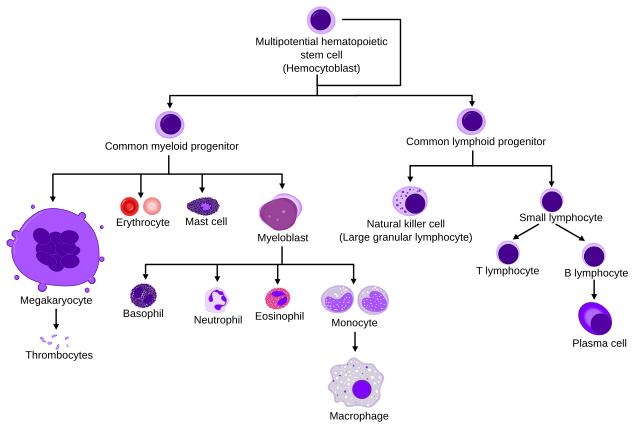We just learned about the
White Blood Cell.
Another type of blood cell is the
Red Blood Cell, also called RBC, red cell, red blood corpuscle, haematid, erythroid cell, or erythrocyte.
Most of the weird science names come from other languages, like corpuscle comes from the Latin word "corpus" for body, haematid comes from the Greek word "hema" for blood, and erythrocyte comes from the Greek words "erythros" for red plus "kytos" for hollow vessel.
Remember there are three types of blood cells: White Blood Cells, Red Blood Cells, Platelets.
There are more red blood cells than the other two type of blood cells, with TRILLIONS of RBCs in the body.
The job of these blood cells is to take oxygen from the lungs to the body, going along the veins and arteries of the circulatory system.
They are shaped a little like a frisbee or a bowl, and they don't have a middle part called a nucleus like most other cells.
Just like the white blood cells, these are made in the bone marrow, and a grown up person makes over 2 million of these RBCs per second!
They go around the body and do their job for about 4 months, and then they get recycled back into the body and replaced by new ones.

(from: wikipedia -
red blood cell)
Kid Facts - Blast from the past: Sclera

































